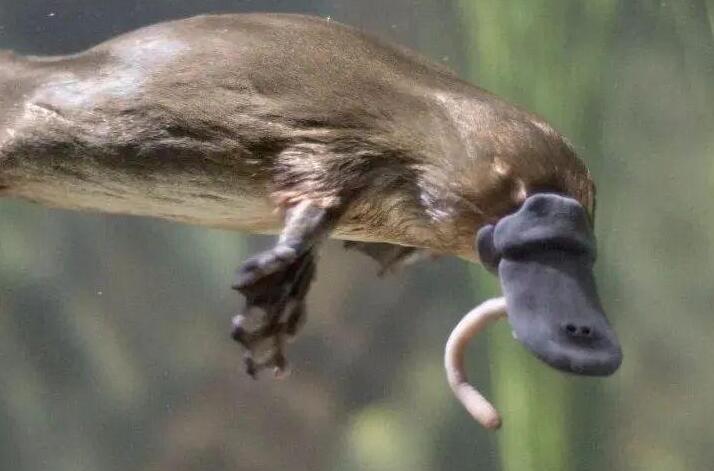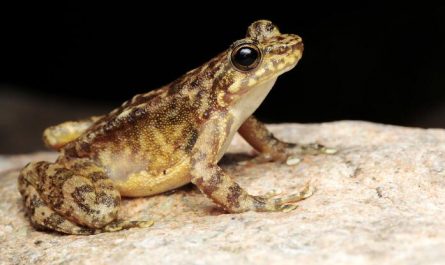The reason why the platypus has no stomach
The researchers were surprised to find that there is no stomach in the platypus, which means that the evolution of this species does not require a stomach. The stomach can break down certain foods and assist in food digestion, but the platypus has only the intestine and esophagus, which are connected together. Scientists clearly pointed out that the platypus had a stomach in the evolutionary process, but due to some factors, it did not form a stomach. The best explanation theory states that the food eaten by a platypus does not require a complicated digestive system and therefore has no stomach.
The platypus is one of the most primitive mammals. It is an incompletely evolved mammal with very few species. There is only the platypus in the same genus, and it is also one of the lowest mammals; in the late 18th century, George Shaw received Platypus specimens thought this creature was the product of mischief, and named it in 1799. The platypus’s mouth and feet resemble a duck, while its body and tail resemble a beaver. It appeared 25 million years ago and still lives in Australia. Since the number of platypus is small and the distribution is small, no subspecies have been found yet.
The platypus is undoubtedly one of the strange-looking animals on the planet: a fat body, a flat tail and a mouth. Those cute little eyes seem to say: “I never hurt anyone.” The platypus has two prominent features. Features. The first is the duck-like mouth, which gives it sensitive predation skills. Hammerhead sharks are very similar and can dig out prey from the silt;
The second is a pair of hollow bones about 15 mm on the back side of the platypus leg. The bones contain toxins that are not very toxic, which can be quickly shot at the enemy, and the venom can kill small animals, but it is not fatal to humans, but it can cause severe pain and lasts for weeks or even months.
The Secret of the Platypus
Precious fur
At the beginning of the 20th century, people did not know about platypus. The first knowledge came from its fur. At that time, hunters liked to kill platypus and cut off their fur. Platypus has a very thick fur and has good waterproof performance, which is very popular in the fur market. Hunters shoot at the platypus swimming in the water, and then let the hounds retrieve the carcass. Sometimes the cunning platypus poisons the hounds, but this does not make the greedy hunter give up. Platypus fur is very popular for making carpets because of its thickness and it is difficult to make clothes.
The “naming” controversy
The biggest controversy among people about the platypus lies in its naming. Many people think it should be “platypus”, while some people think it is wrong, claiming that its naming should be “platypi” in the plural.
The first animal to invent “false teeth”
Platypus’ body structure looks very deformed, but they can handle many complicated things. Although adults do not have teeth, they can break them down when hunting for food. This platypus does a great job. When the platypus finds food in the garbage at the bottom of the river, it often grabs gravel and breaks the food into small pieces. The platypus was the first animal to invent “false teeth”.
Walking on land with webbed joints
People usually think that platypuses are mammals with legs, but in fact they are very awkward to walk out of the water. It has webbed feet, which are very suitable for swimming in the water and helpful for diving. However, this unique body structure brings many inconveniences to walking on land. Walking on land requires half the energy of swimming in water. They basically rely on webbed joints to walk on land. Webbed feet have nails and can be used for digging food or digging holes. Although they hunt underwater, they spend most of the day in dry caves.
Monotreme
When scientists first discovered the platypus, they thought it was a miracle. It was a “patchwork” mysterious animal. It was one of the few spawning mammals. Humans, cattle and most mammals were all viviparous, but the platypus was oviparous. . In addition, it is one of the few monotreme species except the echidna, and is the most primitive group of existing mammals.
Electrical perception
Like many mammals, platypuses make a living by hunting, but what is different is that they do not rely on sight, hearing and smell to find their prey in the water, but use electrical signals and mechanical waves to detect the location of their prey.
Originally thought that the platypus was a “patchwork”
When the platypus was first discovered, some people thought it was a “prank” by naturalists. It was to piece together different types of animal parts to trick people into believing that it was a new species. Even when some people saw a living platypus, they still Can’t believe it is a new species.
Stinger
One of the reasons why people classify the platypus as a strange species is that it has poisonous spines, which are weapons for self-defense and attack. The poisonous spines on the hind feet can easily kill small animals, such as competition for mating objects. Stabbing an adult will cause severe pain.
Affirmation: The top ten life, life rankings and other content are derived from the program system index or shared by netizens. They are only for your reference and happy entertainment. They do not represent the research views of this website. Please pay attention to the authenticity and authority of the source of the content.






